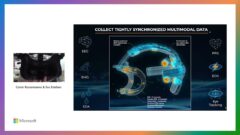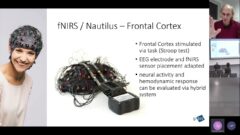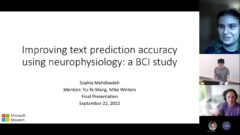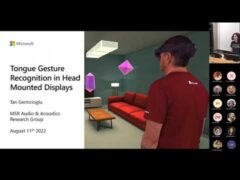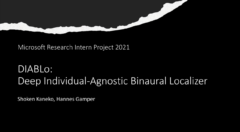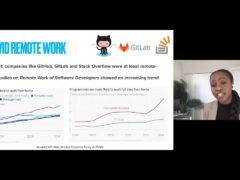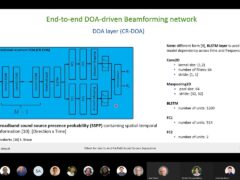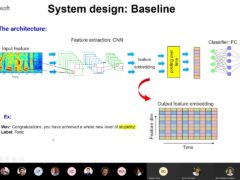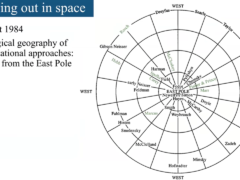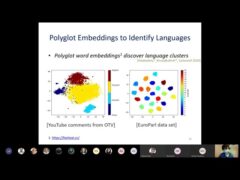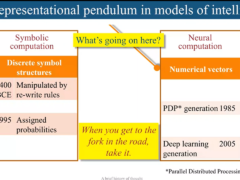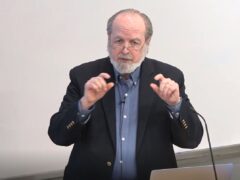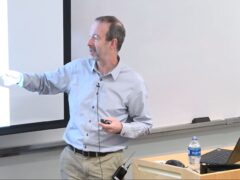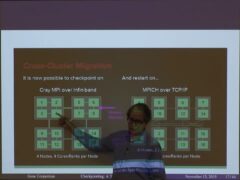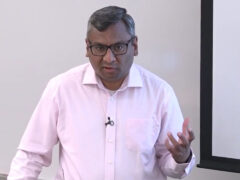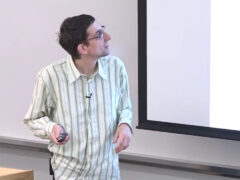Computational Microscopy: Interactive Machine-Learning for Brain Activity Mapping and Understanding High-Dimensional Systems
High-dimensional or complex systems, such as the brain, fundamentally require acquisition of large-scale data in order to collect enough information to understand the system’s dynamics. Novel techniques in neuroscience, such as imaging or multi-electrode array recordings, have enabled the collection of large-scale data, but new tools and algorithms are needed for comprehending this large-scale data. Machine-learning is essential for making sense of high-dimensional systems, but machine-learning algorithms fall short of the sophistication of manual data analysis. To combine the sophistication of manual inspection with the need for automation, we developed a semi-supervised tool called the Imaging Computational Microscope (ICM). This combines machine learning and data visualization within an interactive interface that allows the user to rapidly parse imaging data automatically as well as refine the analysis and results of big data algorithms. We employed ICM to understand large-scale voltage-sensitive dye recordings of the leech nervous system. Even though the leech nervous system is simple compared to the mammalian nervous system, it is still remarkably complex, and scalable computational techniques are needed to understand how the leech nervous system makes decisions and generates behaviors. We imaged the multi-functional responses of hundreds of leech neurons during multiple behaviors to identify and functionally map homologous cells using ICM. Large-scale data fundamentally alters the analysis of experiments, and even simple tasks, like identification, become vastly more challenging. By collecting and synthesizing data across several animals, we identified 21 neurons as part of a canonical swim network and nine cells involved in a partially overlapping preparatory network. The preparatory network rapidly depolarized before the onsets of swimming and shortening and showed an earlier response to stimuli than cells not in the preparatory network, indicating that it is part of a dedicated rapid-response network. This network is likely mediated by the S cell, and we used VSD imaging to probe for synaptic partners to the S cell. We verify the canonical swim and preparatory networks and show that the S cell is pre-synaptic to several cells in the preparatory network using real-time cell identification and computationally guided electrophysiology enabled by ICM.
Speaker Bios
I received my Ph.D in Computational Neuroscience at UC San Diego in Bill Kristan’s lab. In undergraduate at Caltech, I worked in Christof Koch’s lab, where I studied visual attention and deep neural networks. In Neuroscience, even the brains of the simplest organisms are remarkably complicated, and I have been developing the techniques and algorithms for extracting the large-scale data needed to understand such high-dimensional systems. As the experimental recordings continue to progress in scale, automation and interaction with algorithms will become increasingly necessary to test new hypotheses and craft new theories of brain function. I am interested in understanding the nature of neural computation and using interactive machine-learning to overcome the challenges faced when studying complex systems
- Séries:
- Microsoft Research Talks
- Date:
- Haut-parleurs:
- Paxon Frady
- Affiliation:
- University of California San Diego
-
-
Jeff Running
-
-
Taille: Microsoft Research Talks
-
Decoding the Human Brain – A Neurosurgeon’s Experience
Speakers:- Pascal Zinn,
- Ivan Tashev
-
-
-
-
Galea: The Bridge Between Mixed Reality and Neurotechnology
Speakers:- Eva Esteban,
- Conor Russomanno
-
Current and Future Application of BCIs
Speakers:- Christoph Guger
-
Challenges in Evolving a Successful Database Product (SQL Server) to a Cloud Service (SQL Azure)
Speakers:- Hanuma Kodavalla,
- Phil Bernstein
-
Improving text prediction accuracy using neurophysiology
Speakers:- Sophia Mehdizadeh
-
-
DIABLo: a Deep Individual-Agnostic Binaural Localizer
Speakers:- Shoken Kaneko
-
-
Recent Efforts Towards Efficient And Scalable Neural Waveform Coding
Speakers:- Kai Zhen
-
-
Audio-based Toxic Language Detection
Speakers:- Midia Yousefi
-
-
From SqueezeNet to SqueezeBERT: Developing Efficient Deep Neural Networks
Speakers:- Sujeeth Bharadwaj
-
Hope Speech and Help Speech: Surfacing Positivity Amidst Hate
Speakers:- Monojit Choudhury
-
-
-
-
-
'F' to 'A' on the N.Y. Regents Science Exams: An Overview of the Aristo Project
Speakers:- Peter Clark
-
Checkpointing the Un-checkpointable: the Split-Process Approach for MPI and Formal Verification
Speakers:- Gene Cooperman
-
Learning Structured Models for Safe Robot Control
Speakers:- Ashish Kapoor
-





